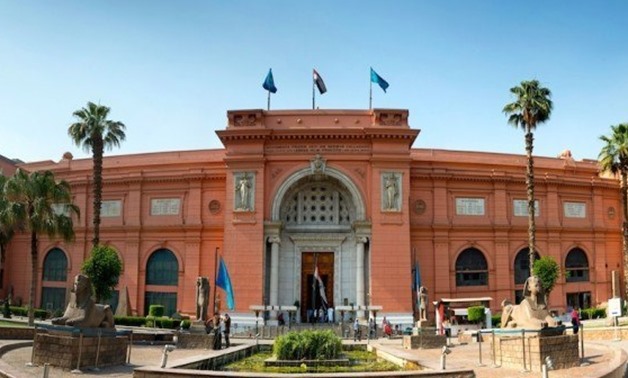
Egyptian Museum in Tahrir Square – Egypt Today.
CAIRO – 12 January 2019: The Egyptian minister of Antiquities Khaled Anany announced that the Ministry received an international grant of € 3 million to develop the Egyptian Museum in Tahrir Square.
Anani added that the plan is implemented by the Ministry of Antiquities and an association of the directors of five European museums, including the Turin’s Egyptian Museum in Italy, London’s British Museum, the Louvre Museum in Paris, and the Egyptian Museum of Berlin.
Head of the Museums Department at the Ministry of Antiquities Ilham Saladin inaugurated a temporary exhibition entitled "Rediscovering the Dead" on Jan 10 at the Egyptian Museum.
The exhibition is scheduled to run until the end of January. According to Saladin, the exhibition is the first of its kind within the Egyptian Museum, where it will be the first time to display 15 different skulls of both genders and different age groups. The skulls are nearly 6,000 years old.
The exhibition also includes the 21,000 year-old skeleton found in Wadi Al-Kobaniyah in Aswan, which is the second oldest skeleton in the world.
In addition, a Roman era mummy of a child layered with gold that was discovered in Akhmim City in Upper Egypt will also be displayed during the exhibition.
Director of the museum Sabah Abdel Razek described the exhibition as educational as it sheds light on the importance of organic archaeology in ancient Egyptian history.
Important information could be obtained from human remains in various archaeological sites, according to Abdel Razek.
Abdel Razek pointed out that the exhibition deals with four different topics: age and sex assessments to clarify gender and age differences, in addition to how to obtain such information through skulls.
The second topic is focusing on different diseases and their effects on skulls.
The third and fourth topics, according to Abdel Razek, shed light on the process of embalming and gathering data on the location of the artifacts.
The exhibition includes a collection of embalmed human remains, highlighting some unique embalming techniques.
The Egyptian Museum is home to the largest collection of ancient Egyptian antiquities in the world. It displays 120,000 artifacts. The museum was first build in 1835 near Al-Azbakeyah Garden and in 1855 it was moved to the Cairo Salaheddin Citadel.
In 1855, the Egyptian government gave Archduke Maximilian of Austria many of the artifacts that are now in the Kunsthistorisches Museum in Vienna.
In 1858, following the establishment of Egypt’s Antiquities Service under the direction of French archaeologist August Mariette, a new museum was established at Boulaq's Nile bank.
But regretfully in 1878, the building suffered significant damage from the Nile River flooding. In 1892, the collections were moved to a former royal palace in Giza where they remained safe until 1902 when the museum in Tahrir Square was built.
Comments
Leave a Comment